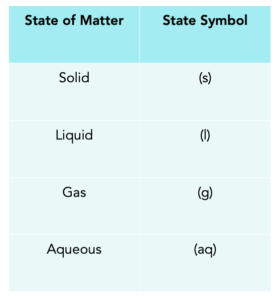Chemical Equations (GCSE Chemistry)
Chemical Equations
Equations
Chemical Equations
Chemical reactions can be represented by word equations or equations using symbols and formulae.
- Formation of compounds can be represented in a chemical formula. The chemical formula shows you the elements involved and the number of atoms involved.
- An equation has reactants and products. Reactants are substances that react together in a chemical reaction to form the products. Reactants are found before the arrow in a chemical formula and products are found after the arrow.
- All chemical equations need to be balanced. On either side of the reaction the number of atoms should be the same and this can be done by putting numbers in front of the atoms or compound.
Balancing Equations
Let’s work through an example to balance an equation:
- Magnesium + Oxygen → Magnesium Oxide. First write the chemical formula for the word equation.
Mg + O2 → MgO
2. First balance the oxygen. Find an element that does not balance and add a number in front of on the other side.
Mg + O2 → 2 MgO
3. Then balance the magnesium. This is fixing the discrepancy caused by initially balancing the oxygen. Add another number on the other side to finish balancing the equation.
2 Mg + O2 → 2 MgO
State Symbols
You can also add state symbols to any reactant or product in the chemical equation.

Below is a reaction that involves all the state symbols:
2 Na (s) + 2 H2O (l) → 2 NaOH (aq) + H2 (g)






Still got a question? Leave a comment
Leave a comment